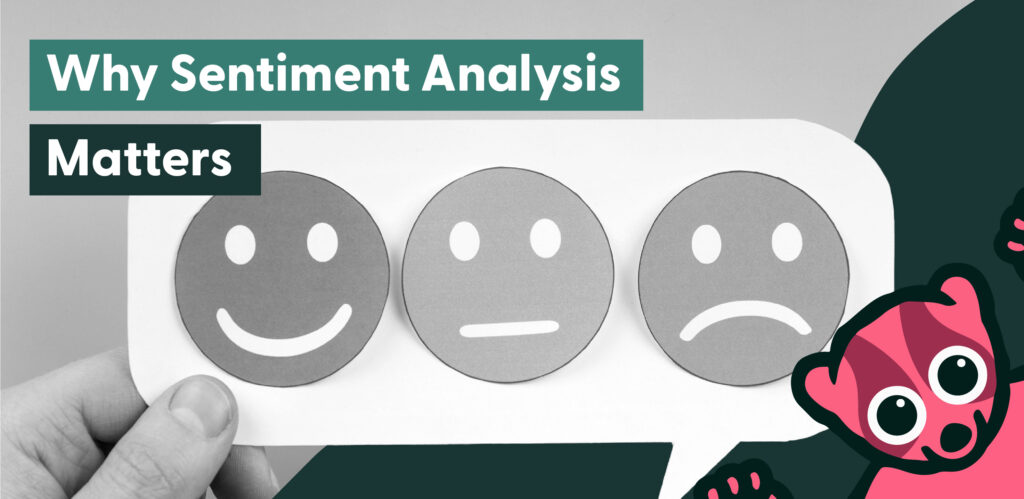
Customer service interactions are about so much more than resolving complaints quickly. It’s also about saying the right thing at the right time.
86% of good customer service turns one-time clients into long-term brand ambassadors. For this reason, you can’t afford not to use the right language during customer interactions.
A negative customer service experience can turn a simple interaction into a disaster for your brand—bad customer service costs businesses $3.7 trillion annually.
Using positive language could be the deciding factor for a customer’s loyalty to your brand.
It’s not what you say that matters; it’s how you say it.
In this article, we’ll guide you through how you can incorporate positive language into your customer interactions. We’ll also share our top tips for using positive customer service phrases that can turn a complaint into a loyal customer.
What Is Positive Language in Customer Service?

Almost 90% of customers are more likely to make a second purchase after a positive customer service experience. This means that how you handle customer interactions can impact your revenue.
One way to provide customers with an excellent experience and improve your bottom line is to use positive language when you speak to them.
Using positive words can also influence how a customer feels and acts after interacting with your contact center, potentially driving customer loyalty and retention.
In customer service, positive language is all about what you can do for your customers rather than what you can’t do.
For example, based on your policies, customer service reps may not be able to offer a customer a full refund for a faulty product. But you may be able to give them a coupon for the same amount as their purchase.
❌ Negative language tells customers you’re not giving them a refund.
😊 Positive language tells customers you can give them a coupon—even if it doesn’t resolve their complaint.
It’s also about replacing negative words and phrases with solutions and actions. Negative language can often shift the blame to customers rather than suggesting the choices and alternatives available.
10 Tips for Positive Customer Service Communication

Now that you know what positive language is in customer conversations, let’s look at how you can get this right:
1. Validate the customer’s feelings
This first step is critical to de-escalating the conversation and is often missed.
Customers want to feel heard and have their complaints validated, which is essentially showing empathy. The language you use can impact this in a huge way.
When it comes to validating customers’ feelings, use positive language with a calm and empathetic tone to diffuse tension and show understanding.
For example, saying: “It makes absolute sense that you’d be frustrated since you were expecting to receive your shipment last week,” can make all the difference when dealing with a disappointed customer.
2. Thank the customer
The next step is to thank the customer for contacting your customer support team and for bringing their complaint to your attention. Over 90% of customers say that a business’s expression of gratitude makes them happy.
Your organization may have something specific you should say, but if you don’t you can say something like, “We appreciate you contacting us with this concern,” as a good way to kick off the conversation.
You should also thank the customer for their patience and understanding while you attempt to resolve their complaint.
3. Apologize and act
Customer retention increases by 17% when the words “I’m sorry” are used in response to a complaint.
We’ve studied apologies and have found that the best ones include an action statement outlining what steps will be taken to correct the problem.
Saying, “I’m so sorry to hear you’re having trouble using our product. I’m going to escalate this issue to the right team immediately,” shows the customer that you’re taking action to resolve their issue. It may help them feel more at ease that their complaint is being efficiently handled.
4. Offer time-bound solutions
Once you’ve let the customer know which actions you’ll take, it’s important to connect each action with a time frame. This helps manage the customer’s expectations. Customers also naturally want to know when their problems will be resolved.
If you don’t know when a customer issue will be resolved, you can still use positive language and give them a conservative time rather than saying you’re not sure.
An example could be, “I can assure you that your concerns are extremely important to us, and we’ll work fast to resolve your issue. You can expect me to follow up with you in around X hours.”
5. Offer an alternative
Sometimes, there’s no way to resolve the customer’s problem, and that’s okay.
In these situations, the customer service rep should focus on what they can offer, like a discount on their next purchase, instead of what they can’t, like a refund. This helps keep the conversation positive and shows the customers that you value them.
6. Separate the problem from the person
It can be difficult for a customer service representative to use positive language after a customer has been shouting at them on the phone for 10 minutes. But positive language is the quickest way to turn this situation around.
You need to train and coach your customer service agents so that they learn not to take an unhappy customer’s words and attitude personally. They need to be able to prioritize solutions over feelings.
We’ve also found that in more than 70% of conversations, negative customer sentiment is directed at the business the customer is complaining about, not the agent. It’s important that your agents know this so that they don’t take things personally.
7. Avoid pessimistic or negative language
Negative words and phrases can easily creep into customer service interactions, especially when an agent is trying to resolve a complaint quickly.
You may not realize it, but phrases like “I need to transfer you to another department” could be more pessimistic than “I want to make the best use of your time. Would you mind if I transfer you to my colleague who specializes in your situation?”
8. Address the customer as ‘you’
When speaking to a customer, using the noun ‘you’ is powerful. It puts the customer at the center of the conversation instead of the agent. This could help customers feel like they have your full attention rather than like they’re just another ticket in your contact center.
Rather than saying, “I think the best thing to do is to request a refund,” say, “I would recommend that you ask our sales team for a refund.”
9. Demonstrate confidence
It’s always a good idea to have a positive attitude when dealing with customers. One study found that when customers dealt with representatives who had a positive attitude, they rated their interactions higher than those who didn’t.
However, in addition to a positive attitude, your agents also need to demonstrate that they know what they’re doing and that customers can trust them to resolve their problems.
It’s important to be cautious about using too much positive language, especially if the agent’s resolution isn’t what the customer hoped for. Instead, you should show that you understand the customer and how they’re feeling.
10. Avoid complex language
Around 65% of online customers prefer a casual tone to a formal one when dealing with customer service. Agents should avoid complex or formal language or tone that wouldn’t be used in day-to-day life.
The way you talk to customers should be no different than the way you talk to the people in your lives that you care about.
Complex product-related jargon or phrases that are too technical can make customers feel like they can’t relate to your agents or brand.
Negative Words Customer Support Teams Should Avoid

Some examples of negative phrases to avoid in customer interactions include:
❌ I can’t, or I cannot.
❌ I won’t, or I will not.
❌ Unfortunately.
For example, let’s say that you’re an eCommerce retailer, and a customer calls in saying they received the wrong color product: they wanted red shoes and instead received blue. The problem is that you don’t have any blue shoes in stock at the moment.
Your agents should avoid saying something like, “Unfortunately, I can’t replace the shoes because the blue shoes are currently out of stock. You can call us again in a few days.”
Instead, they could say something like, “I’m truly sorry that you received the wrong color. I completely understand that you are upset. At the moment, our blue shoes are out of stock. However, I can call you back as soon as we receive stock, which should be in X days.”
This statement is better as it:
✅ Expresses that the agent understands their concern.
✅ Provides a time-bound resolution.
✅ Avoids words like “unfortunately” and “I can’t.”
You should also avoid language that blames the customer for a problem.
If a customer contacts your support team asking why there was a fee charged to their account, blaming the customer would sound like, “That’s because you didn’t pay on time.”
Instead, your agents should remain empathetic and sensitive as there could be a valid reason why they’ve not paid their account on time.
A better response in this situation would be to say, “Your account was charged a fee because payment was not made before the due date. You can turn on the option to receive emails as a reminder when your due date is to pay the account.”
With this non-blaming response, you’re:
✅ Driving the conversation toward what happened with the customer’s account.
✅ Providing valuable information that may help them.
Why Sentiment Analysis Matters

Customer sentiment analysis is when you analyze how a customer feels about your business and customer service based on their language.
Traditionally, it has been a useful tool to train agents and review their performance after customer interactions. However, determining the sentiment of a conversation only after the interaction has ended won’t help you fix problems in real time.
However, new platforms have emerged that provide live sentiment analysis. These can help you determine the right language to use when dealing with a customer during an interaction.
When agents have access to live customer sentiment, they have a clearer understanding of what to say (and when to say it) to turn a negative interaction into a positive one.
Conversation intelligence platforms like Loris can provide your agents with live sentiment analysis and give them guidance on what to say to turn a dissatisfied customer into a happy one.
Scaling Best Practice Customer Service Language with Loris
Loris is a conversation intelligence platform that analyzes every single customer interaction with your contact center. It then generates actionable insights and helps identify the most important conversations.
These conversations allow you to identify areas where more positive language is needed and the specific parts of the conversation where sentiment turned negative or positive. This allows you to coach your agents based on specific examples and suggest different words and phrases to use next time.
One thing we’ve learned when working with brands is that agents often use their own responses based on what they think works best in an interaction. This can be an issue for businesses that are looking to drive a more consistent brand voice across their customer support team – or have a distributed team where it’s harder to monitor individual agents.
Tools like Loris can provide the right balance of suggested phrases, live customer sentiment, and ad-hoc agent language. You can even customize workflows to better represent your brand for agents to use.
Equip Your Customer Service Agents with the Tools they Need for Positive Language
We’d love to show you Loris in action to see how our platform can help your agents say the right thing at the right time. Speak to one of our experts to learn more about our platform.